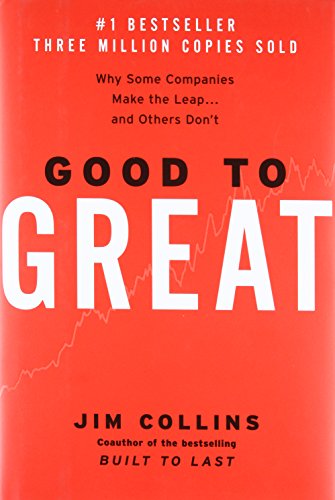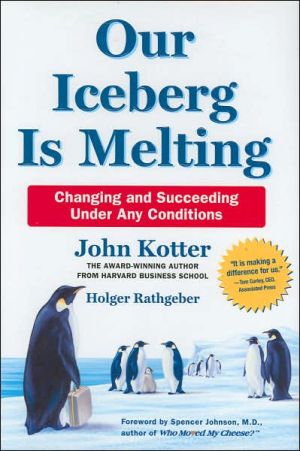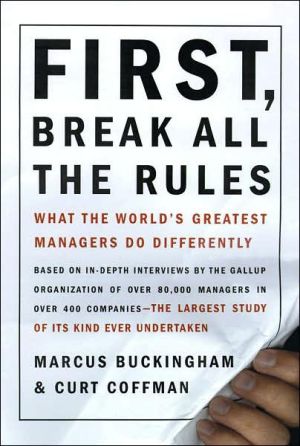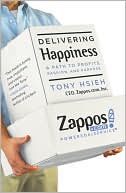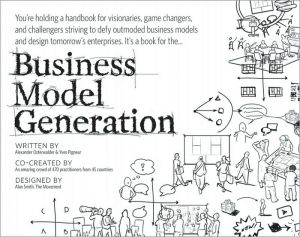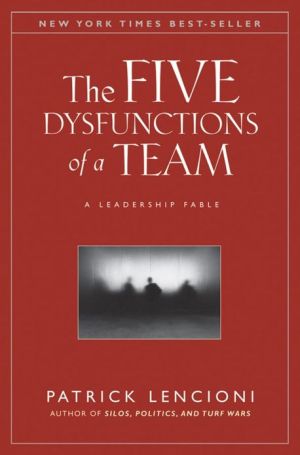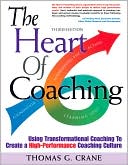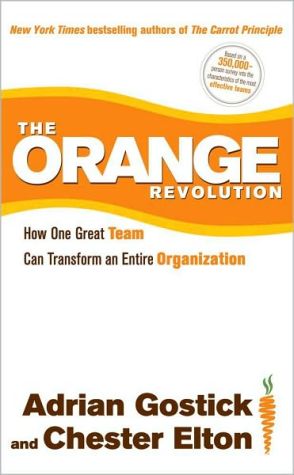Organizational Behavior in Education: Leadership and School Reform
Well-established as a standard textbook in the preparation of effective and thoughtful school administrators, the Tenth Edition of Organizational Behavior in Education continues its tradition of offering students of educational administration the most current thinking and the most in-depth exploration of organizational leadership as it relates to decision-making, organizational change, managing conflict, and motivating others. As readers are challenged to develop and analyze the successful...
Search in google:
Well-established as a standard textbook in the preparation of effective and thoughtful school administrators, the Tenth Edition of Organizational Behavior in Education continues its tradition of offering students of educational administration the most current thinking and the most in-depth exploration of organizational leadership as it relates to decision-making, organizational change, managing conflict, and motivating others. As readers are challenged to develop and analyze the successful implementation of school reform, they gain a professional understanding of the organizational theory and research that are the bedrock of modern practice.This thoroughly revised edition updates the research and theory behind organizational effectiveness in schools as it pertains to change, leadership, and new issues in school reform including comprehensive school reform models, charter schools, and school vouchers. This new material contains current emerging developments in the fast-paced world of contemporary school reform and keeps students abreast of emerging trends.New Features Include:New Critical Incidents at the beginning of each chapter provide learners with opportunities to develop critical thinking skills related to chapter content and to better understand real-world occurrences in school environments. New research evidence surrounding current market-based reforms, such as charter schools, vouchers, and tuition tax credits, allows learners to develop informed opinions on the privatization of education. New research evidence on the effectiveness of the standards-based movement in education helps readers come to their own conclusions about whether or not standards-based education has resulted in higher student achievement. New material on Comprehensive School Reform (CSR) models, assists readers in understanding and analyzing new trends in educational reform. Updated leadership theory and research, including the concepts of sustainability leadership and distributed leadership, ensure that students stay current in the field of leadership studies."This text is laden with history, theory, and description. It serves as a foundation for the student’s future decisions...I personally believe it gives them a sense of the development of theory over time in the various areas covered. It gives them a basis for forming their own leadership styles, understanding that perhaps they are not a clear cut one size fits all but perhaps a bit of many theories and models. This text gives them this sense of the richness of theory and the realization that there is no one size fits all answers. However, it lays a foundation on which they can predicate future administrative decisions, reforms, and procedures." Patricia Helene Earl, Marymount University
PrefaceEducational Leadership Policy Standards for 2008ISLLC Functions by ChapterChapter 1 In Search of a Vision 1Critical Incident; The Vision for South Shore High School 1Assumptions, Beliefs, Behaviors 2The Nature of Scientific Progress 5Impact of Behavioral Science 8Psychoanalytic Psychology 9Sociological and Psychological Points of View 10Cognitive Psychology 10Social Psychology 11Schools as Educative Organizations 13Organizational Theory 14Theory Defined and Described 14Two Major Perspectives on Educational Organizations 14The Relevance to School Leadership Today 22Vision and Educational Leadership 23The No Child Left Behind Act of 2001 23Research in Education 24The Framingham Heart Study 25The Tennessee STAR Study 26Research and NCLB 27Leadership as Coaching 29Coaching as a Method of Teaching 29Conclusion 30Reflective Activities 32Suggested Reading 32Chapter 2 Guiding Concepts of Practice 33Critical Incident: Controversy at the Principals' Meeting 33Two Principal Sources of Conflict 35The "Great Debate": Traditional versus Progressive Education 35The Beginnings of the Great Educational Debate 36The Backlash of the 1950s 38The Neoprogressives Emerge in the 1960s 39The Contemporary Debate on Schooling 40A Paradigm Shift in Education 43A Passion for Equality 44The Traditional Paradigm of Intelligence 44A New Paradigm of Intelligence---or the Lake Wobegon Syndrome? 46Multiple Intelligences Theory 47Gardner's Multiple Intelligences Theory (MIT) 49Perkins's Learnable Intelligence Theory 51Smart Schools 52Emotional Intelligence 53Sustainability: The Debate Continues 54Theory of Action 55Theory of Practice 58The Game Plan: A Coaching Metaphor 59Conclusion 60Reflective Activities 60Suggested Reading 61Chapter 3 Mainstreams of Organizational Thought 63Critical Incident: A Philosophical Disagreement on Administration 63Organizational Behavior 64Organization and Behavior 65Why Study Organizational Behavior? 66Impact of the Industrial Revolution 67Frederick W. Taylor and Scientific Management 67The Beginning of Modern Organizational Theory 68Emergence of Bureaucratic Organizational Theory 69The Rise of Classical Organizational Theory 70Scientific Management versus Classical Organizational Theory 71Organizational Concepts of Classical Theory 72Classical and Neoclassical Administrative Concepts 73The Human Relations Movement 73The Western Electric Studies 74Sociometry 75Behavior Patterns in Groups 75Leadership as a Group Function 76The Paradox of Organizational Structure 77The Organizational Theory Movement 78Human Relations and Organizational Behavior 80Conclusion 82Reflective Activities 83Suggested Reading 83Chapter 4 Organizational Theory 84Critical Incident: A Tale of Two Principals 84Organizational Structure and People 85General Systems Theory 86Social Systems Theory 87Role Theory 90Role Conflict 91Role Ambiguity 91Role Set 92Functional Roles in the Group 94Role Related to Social Systems Theory 95Equilibrium 98Homeostasis 99Feedback 99Sociotechnical Systems Theory 100Contingency Theory 102Rational Planning Models 104Open System Related to Contingency Theory 106Response to Technological Change 106Interaction with the External Environment 107Contingency Theory and Organizational Behavior in Schools 108Conclusion 109Reflective Activities 110Suggested Reading 110Chapter 5 The Human Dimension of Organization 112Critical Incident: Turning Madison High Around 112Reconceptualizing the Nature of Organizations 114A New Paradigm of Organizational Theory 116Rise of Qualitative Research Methods 117Educational Organizations as Loosely Coupled Systems 118Educational Organizations as Dual Systems 119Building Human Capital 121Human Resources as Assets 122Organizational Culture as a Bearer of Authority 126Five Basic Assumptions of Effective Schools 127Professional Development 130Conclusion 131The Effort to Create an Administrative Science 131Centrality of the Human Dimension of Organization 132Where we are and Where we are Going 133Reflective Activities 133Suggested Reading 134Chapter 6 Organizational Culture and Organizational Climate 135Critical Incident: Two Schools---Two Different Cultures 135Human Resources Development 136Defining and Describing Organizational Culture and Climate 137Research on Organizational Culture 140Organizational Culture and Organizational Climate Compared and Contrasted 142Specifying What Organizational Culture is 143How Organizational Culture is Created 144Symbolism and Culture 145Organizational Climate 146The Affective Aspects of Culture and Climate 147Multiple Cultures 147How Organizational Climate is Created 148Group Norms 149Person-Environment Interaction 150Concept of Behavior Settings 151The Interaction-Influence System 152Describing and Assessing Organizational Culture in Schools 153Relationship Between Organizational Culture and Organizational Effectiveness 153Cause and Effect 154Four Management Systems 156Conclusion 161Reflective Activities 162Suggested Reading 163Chapter 7 Organizational Change 165Critical Incident: The Man for the Job! 165School Reform and Change 170Power Relationships and School Restructuring 170Aims of Educational Reform 171The Tradition of Change in American Education 172Natural Diffusion Processes 172Planned, Managed Diffusion 173Three Strategies of Planned Change 174Empirical-Rational Strategies of Change 174Power-Coercive Strategies of Change 177Normative-Reeducative or Organizational Self-Renewal Strategies 178Research on the Effectiveness of Organizational Development 189Two Emerging Questions 192Can the Schools Do it Alone? 192Is School Reform Enough? 194Conclusion 194Reflective Activities 196Suggested Reading 197Chapter 8 Leadership 198Critical Incident: Leadership at North River Middle School 198Adaptive Leadership 199Leadership and Management 200Power and Leadership 201Leadership Different from Command 202Power Defined 203Two-Factor Leadership Theory Abandoned 204Leadership as a Relationship with Followers 206Your Understanding of Human Nature is Critical 207Transformational Leadership 208Transformational Leadership Compared and Contrasted with Transactional Leadership 208Moral Leadership 209A Progression 209A Process of Growth and Development 209Leadership and Vision 210Whose Vision is it Anyway? 211Manipulation and Empowerment 213Critical Theory 213Important Concepts About Leadership for the Educational Leader 214Distributed Leadership 214Professional Learning Communities and Parental Involvement 214Sustainable Leadership 217Conclusion 220Reflective Activities 221Suggested Reading 221Chapter 9 Decision Making 224Critical Incident: Deciding How to Decide 224Individual versus Organizational Decision Making 226Rationality in Decision Making 227Rational Decision-Making Models 229Limits on Rationality in Decision Making 230The Gap Between Theory and Practice 231Five Leadership Styles 231Seven Situation Issues 232Decision-Process Flowchart 232The Nature of Managerial and Administrative Work 234How Administrators Think 236The Influence of Organizational Culture on Decision Making 238Closing the Gap Between Theory and Practice 239Theory of Practice 240Human Resources Development 240Participative Decision Making 241Participative Decision Making and Empowerment 242Participative or Democratic? 244An Explicit Decision-Making Process 245Who Identifies the Problem? 246Emergent and Discrete Problems 246Who Should Participate? 247Desire of Individuals to Participate 248Team Administration 249Participation Requires High Level of Skills 250Paradigms for Collaborative Decision Making 251Total Teamwork System (TTS) 253Conclusion 255Reflective Activities 256Suggested Reading 258Chapter 10 Conflict in Organizations 259Critical Incident: Conflict in the First-Grade Team 259The Nature of Conflict in Organizations 260Definition of Conflict 260Conflict Different from Attacks 261Contemporary Views of Conflict 261Effects of Organizational Conflict 262The Criterion: Organizational Performance 263The Dynamics of Organizational Conflict 264Hostility 264A Contingency View 265A Process View of Conflict 265A Structural View of Conflict 266An Open-Systems View of Conflict 268Approaches to Organizational Conflict 269The Win-Lose Orientation to Conflict 269A Contingency Approach to Conflict 270Diagnosing Conflict 270A Contingency Approach to the Diagnosis of Conflict 272Conclusion 275Reflective Activities 276Suggested Reading 279Chapter 11 Motivation 280Critical Incident: Changes at Washington High School 280The Meaning and Patterns of Motivation 281First Pattern: Direction in Making Choices 281Second Pattern: Persistence 282Third Pattern: Intensity 282The Extrinsic-Intrinsic Debate 283Extrinsic, or Behaviorist, Views 283Intrinsic Views of Motivation 283Individual and Group Motivation 284The Western Electric Studies Revisited 284The Illumination Studies 284The Relay Inspection Group Studies 285Central Findings of the Studies 286Impact of the Studies 286Contemporary Views of the Western Electric Studies 287Individual Differences 287In Praise of Diversity 288Archetypes 289Human Intelligence 289Temperament and Organizational Behavior 290The Four Psychological Types 290The Myers-Briggs Type Indicator (MBTI) 291Final Thoughts on Temperament and Organizational Behavior 293Intrinsic Motivation 294Cognitive Views of Motivation 294The Humanistic Perspective 299Conclusion: General Principles 309Reflective Activities 310Suggested Reading 310Chapter 12 School Reform 312Critical Incident: District Test Scores Decline Once Again 312Market-Based School Reform 313Origin of Market-Based Reforms 314Economic Theory and School Reform 316School Reform as Investment Opportunity 318Current Status of Charter Schools 320Vouchers 324Privatization in Higher Education 325Standards-Based School Reform 326Have Higher Standards Worked? 329Whole-School Reform 332Increasing School Autonomy 332Support for School Leaders 335Research Support for CSR Models 336Response to Intervention (RTI) 338Teacher Education and School Reform 339National Network for Educational Renewal (NNER) 340The American Council on Education Initiative 340The Flexner Report on Medical Education as Precedent 341A Broader, Bolder Approach to Education 341Conclusion 342Reflective Activities 343Suggested Reading 343Notes 345Glossary 367Name Index 371Subject Index 375

